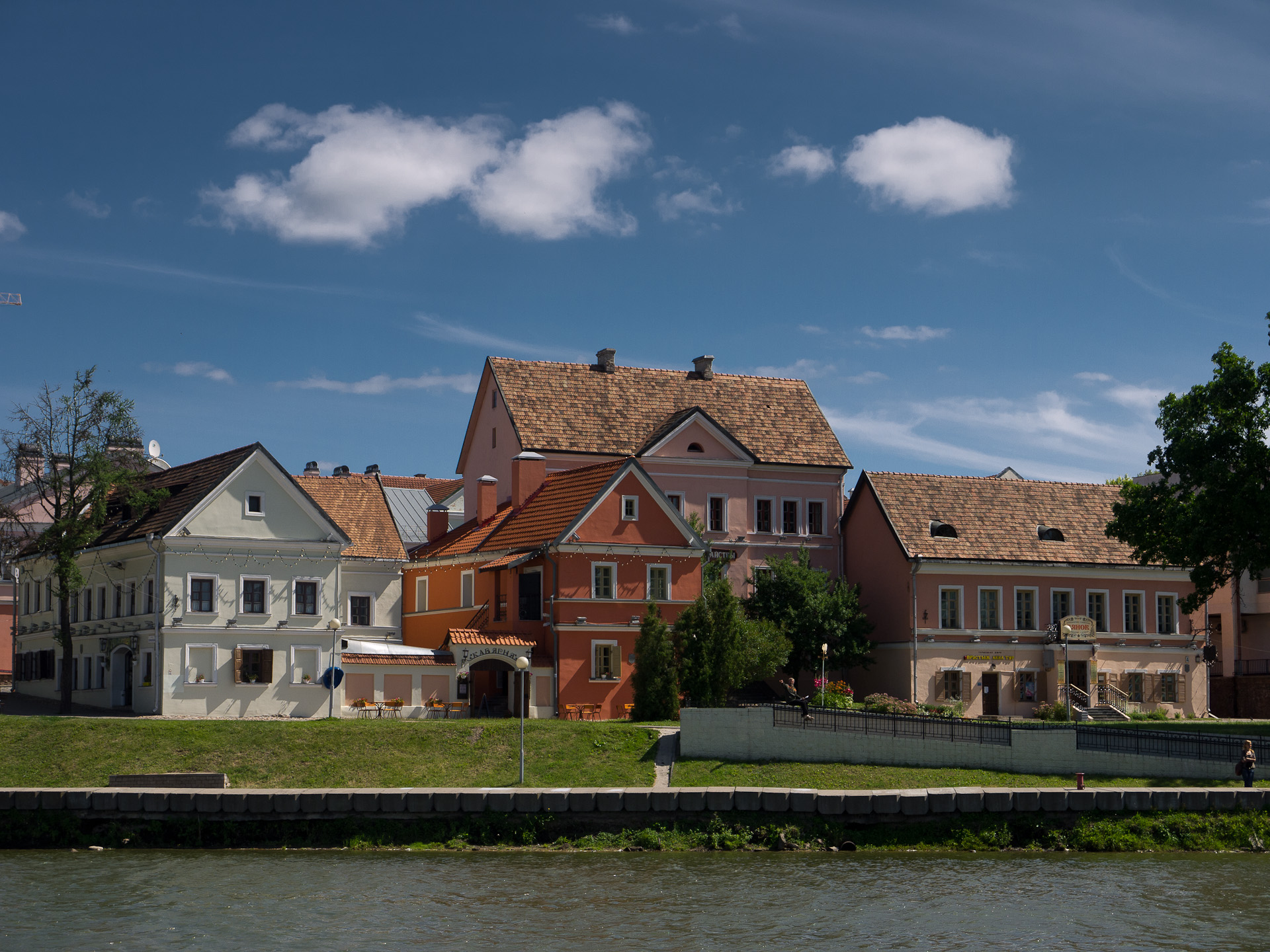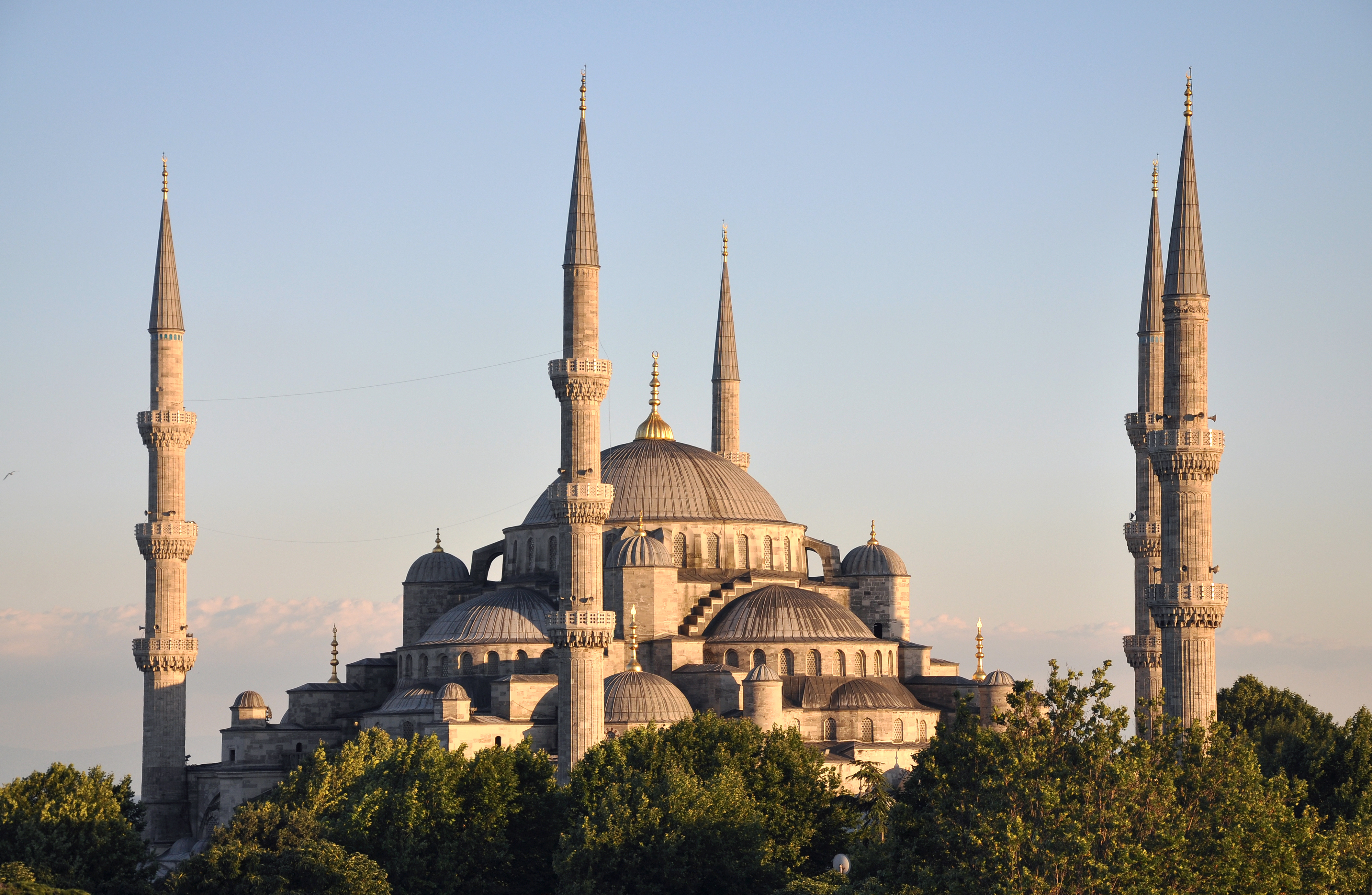|
Tatarskaya Slabada
Tatarskaya Slabada (; ) is a historical settlement in Minsk, west and northwest of the old city centre. Geography It is located on the low left bank of Svislach and was settled by Lipka Tatars from the 15th century (first settlement recorded in 1428) to mid-20th century. It consisted of mainly wooden 1- and 2-storey wooden houses surrounded by lush gardens (local Tatars historically were main suppliers of vegetables and fruit for local markets). The only tall building of the area was a local mosque (Minski Myachet; ). History Tatarskaya Slabada was devastated during the World War II. During Minsk's postwar reconstruction large part of the settlement (including the mosque) was destroyed to provide land for ''Parkavaya Mahistral'' avenue (later ''Praspekt Masherava'', currently ''Praspekt Peramozhtsaǔ''). Now the area is built by high-rise office and residential buildings from the 1960s-1980s. Traditional local residents (Lipka Tatars The Lipka Tatars (Lipka – refers to ' ... [...More Info...] [...Related Items...] OR: [Wikipedia] [Google] [Baidu] |
Minsk
Minsk ( be, Мінск ; russian: Минск) is the capital and the largest city of Belarus, located on the Svislach (Berezina), Svislach and the now subterranean Nyamiha, Niamiha rivers. As the capital, Minsk has a special administrative status in Belarus and is the administrative centre of Minsk Region (oblast, voblast) and Minsk District (Raion, raion). As of January 2021, its population was 2 million, making Minsk the Largest cities in Europe, 11th most populous city in Europe. Minsk is one of the administrative capitals of the Commonwealth of Independent States (CIS) and the Eurasian Economic Union (EAEU). First documented in 1067, Minsk became the capital of the Principality of Minsk before being annexed by the Grand Duchy of Lithuania in 1242. It received town privileges in 1499. From 1569, it was the capital of the Minsk Voivodeship, an administrative division of the Polish–Lithuanian Commonwealth. It was part of a region annexed by the Russian Empire in 1793, as a c ... [...More Info...] [...Related Items...] OR: [Wikipedia] [Google] [Baidu] |
Svislach (Berezina)
The Svislach or Svislač ( be, Свіслач, ), or Svisloch (russian: Свислочь), is a river in Belarus, a right tributary of the river Berezina. It is long, and has a drainage basin of .Свислочь (река, приток р. Березины) The name is derived from the root -''visl''- 'flowing,' of Indo-European origin (compare the River).E.M. Pospelov, ''Geograficheskie nazvaniya mira'' (Moscow, 1998), p. 372. Svisłač flows through |
Lipka Tatars
The Lipka Tatars (Lipka – refers to '' Lithuania'', also known as Lithuanian Tatars; later also – Polish Tatars, Polish-Lithuanian Tatars, ''Lipkowie'', ''Lipcani'', ''Muślimi'', ''Lietuvos totoriai'') are a Turkic ethnic group who originally settled in the Grand Duchy of Lithuania at the beginning of the 14th century. The first Tatar settlers tried to preserve their shamanistic religion and sought asylum amongst the non-Christian Lithuanians.Lietuvos totoriai ir jų šventoji knyga - Koranas Towards the end of the 14th century, another wave of Tatars – this time, , were invited into the Grand Duchy by [...More Info...] [...Related Items...] OR: [Wikipedia] [Google] [Baidu] |
Mosque
A mosque (; from ar, مَسْجِد, masjid, ; literally "place of ritual prostration"), also called masjid, is a Place of worship, place of prayer for Muslims. Mosques are usually covered buildings, but can be any place where prayers (sujud) are performed, including outdoor courtyards. The first mosques were simple places of prayer for Muslims, and may have been open spaces rather than buildings. In the first stage of Islamic architecture, 650-750 CE, early mosques comprised open and closed covered spaces enclosed by walls, often with minarets from which Adhan, calls to prayer were issued. Mosque buildings typically contain an ornamental niche (''mihrab'') set into the wall that indicates the direction of Mecca (''qiblah''), Wudu, ablution facilities. The pulpit (''minbar''), from which the Friday (jumu'ah) sermon (''khutba'') is delivered, was in earlier times characteristic of the central city mosque, but has since become common in smaller mosques. Mosques typically have Isl ... [...More Info...] [...Related Items...] OR: [Wikipedia] [Google] [Baidu] |
World War II
World War II or the Second World War, often abbreviated as WWII or WW2, was a world war that lasted from 1939 to 1945. It involved the World War II by country, vast majority of the world's countries—including all of the great powers—forming two opposing military alliances: the Allies of World War II, Allies and the Axis powers. World War II was a total war that directly involved more than 100 million Military personnel, personnel from more than 30 countries. The major participants in the war threw their entire economic, industrial, and scientific capabilities behind the war effort, blurring the distinction between civilian and military resources. Air warfare of World War II, Aircraft played a major role in the conflict, enabling the strategic bombing of population centres and deploying the Atomic bombings of Hiroshima and Nagasaki, only two nuclear weapons ever used in war. World War II was by far the List of wars by death toll, deadliest conflict in hu ... [...More Info...] [...Related Items...] OR: [Wikipedia] [Google] [Baidu] |
Ethnic Enclaves In Europe
An ethnic group or an ethnicity is a grouping of people who identify with each other on the basis of shared attributes that distinguish them from other groups. Those attributes can include common sets of traditions, ancestry, language, history, society, culture, nation, religion, or social treatment within their residing area. The term ethnicity is often times used interchangeably with the term nation, particularly in cases of ethnic nationalism, and is separate from the related concept of races. Ethnicity may be construed as an inherited or as a societally imposed construct. Ethnic membership tends to be defined by a shared cultural heritage, ancestry, origin myth, history, homeland, language, or dialect, symbolic systems such as religion, mythology and ritual, cuisine, dressing style, art, or physical appearance. Ethnic groups may share a narrow or broad spectrum of genetic ancestry, depending on group identification, with many groups having mixed genetic ancestry. Ethnic ... [...More Info...] [...Related Items...] OR: [Wikipedia] [Google] [Baidu] |
History Of Minsk
Early East Slavs settled the forested hills of today's Minsk by the 9th century. They had been migrating from further south and pushing the preceding Balts northwards. The valley of ''Svislach'' river was settlement boundary between two Early East Slavs' tribal unions – Krivichs and Dregovichs. By 980 the area was incorporated into the early medieval Principality of Polatsk, one of the earliest East Slav states along with the principalities of Kiev and Novgorod. Overview There is no exact historical record for the date when Minsk was founded. It was first mentioned (as ''Mensk'') in the Primary Chronicle in 1067. That year the chronicle recorded a bloody battle between troops of Polatsk and Kiev princes on the banks of Niamiha river (tributary of ''Svislach''). Minsk, which was a Principality of Polatsk town, was burnt down by the Kievan army during a war between Kiev and Polatsk. 1067 is now widely attributed as a founding year of Minsk, though the town (by then fortified by w ... [...More Info...] [...Related Items...] OR: [Wikipedia] [Google] [Baidu] |
Geography Of Minsk
Geography (from Greek: , ''geographia''. Combination of Greek words ‘Geo’ (The Earth) and ‘Graphien’ (to describe), literally "earth description") is a field of science devoted to the study of the lands, features, inhabitants, and phenomena of Earth. The first recorded use of the word γεωγραφία was as a title of a book by Greek scholar Eratosthenes (276–194 BC). Geography is an all-encompassing discipline that seeks an understanding of Earth and its human and natural complexities—not merely where objects are, but also how they have changed and come to be. While geography is specific to Earth, many concepts can be applied more broadly to other celestial bodies in the field of planetary science. One such concept, the first law of geography, proposed by Waldo Tobler, is "everything is related to everything else, but near things are more related than distant things." Geography has been called "the world discipline" and "the bridge between the human and th ... [...More Info...] [...Related Items...] OR: [Wikipedia] [Google] [Baidu] |



